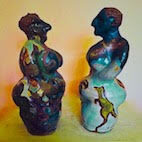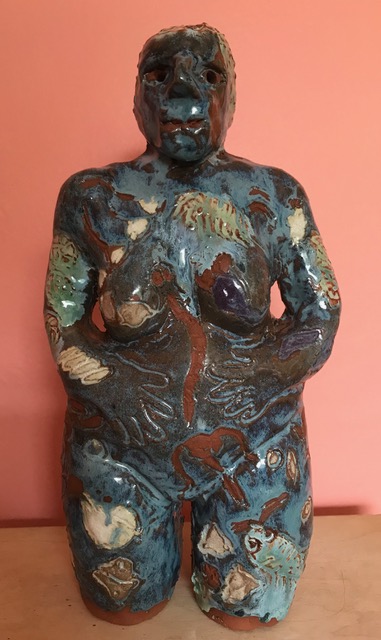Goddesses, in many, many forms, have been big teachers for me. As a girl, I searched for ways out of the oppression and belittling I suffered in patriarchy. Goddesses supplied role models for other ways to be.
As a small child, my mother told me the Greek myths. She said Greek gods were forces of nature. Moon, sun, winds, thunder. Greek goddesses were not totally satisfactory role models. They were badly behaved, vindictive and unreliable. However they did give me a larger mythical world for my wild emotions to live in than the details of my daily life.
At 18, I went to India, and met goddesses from a different world, more emotional and alive. Some time later, the Tibetan goddesses have been my teachers for the last 45 years.
I never had a goddess who would grant my wishes, or anything like that. I don’t have to believe in anything. Tibetan deities are ‘your own mind in the form of a deity.’
All these taught me first how to be a woman, what could make me strong and wise, and other women too. And men stronger too. I always felt, I can’t grow into a mature woman, without men also growing alongside me, into something different, beyond patriarchy. Tibetan gods were not patriarchal. They offered another image of men, which looked to me like the matriarchal way from ancient times. They taught me heaps about what men can look like as well.
Greek gods were forces of nature. Tibetan gods are more like forces of our personality, how we deal with love and power, and various kinds of suffering and disasters, anger, fear, fear of death. How we convert it all to compassionate action, and see its nature as enlightened wisdom.
They’re all manifestations of love. There are no evil goddesses or gods in the Tibetan system. Even the most evil-looking ones are made of love. I meditate on them to develop their capacities, develop love, wisdom and skilful action and all the realms they embody.
I applied the same principles to our society. What could make our whole modern western capitalist world a healthier place, physically and emotionally? So there I was, in Ecofeminism.
Then I found Gimbutas and her friends, who said old times were based on the mothering ways of nature. Nature herself is a goddess, and Mother Earth, in many, many parts of the world, and it very much feels like it to me.
I met Riane Eisler’s partnership way, which made clear that we can change paradigm away from the present dominator world. Then I found Heide Goettner-Abendroth’s work on indigenous matriarchies. She presents a model for how traditional societies have lived like that, in cooperation with Mother Nature, since the most ancient times. I lived in ecovillages which were in many ways hoping to live by those principles.
Recently I’ve been sculpting goddesses of nature and Mother Nature’s principles. I’ve put one here. Goddess of Plankton.
All these Goddesses rounded out for me how the Goddess could show us a way forward, into the winds of climate disaster, and build a way to live in accord with Mother Nature, and look after her, which she desperately needs. My own very personal suffering was my background to shaping the Mother Nature-archy recipe.
Patriarchy lives by what it sees as masculine and devalues what it considers feminine. What patriarchy sidelines as the ways of women and mothering principles can lead all of us beyond patriarchy into a caring way to live, valuing life above all.
We ‘westerners’ can’t live the same way as tradition indigenous peoples still live. We will need to create a new model, based on all this ancient wisdom.

